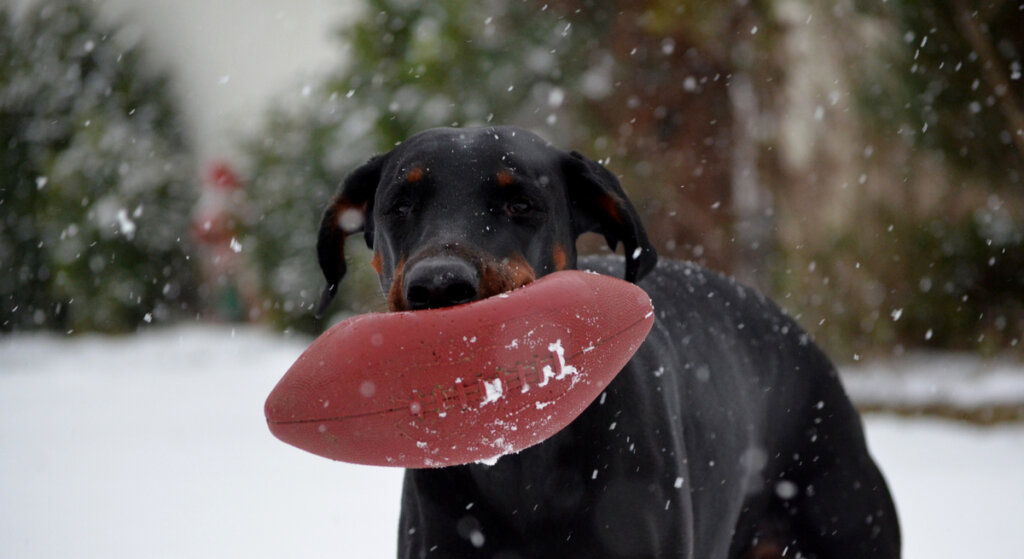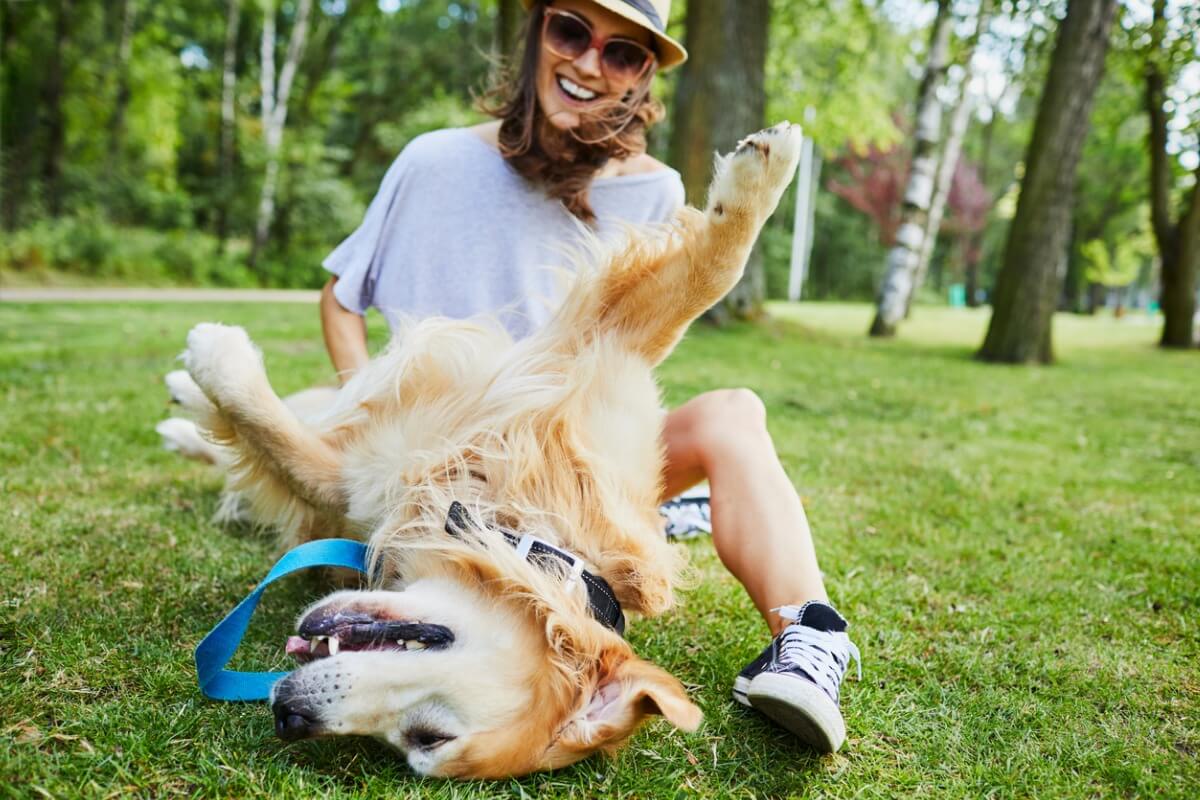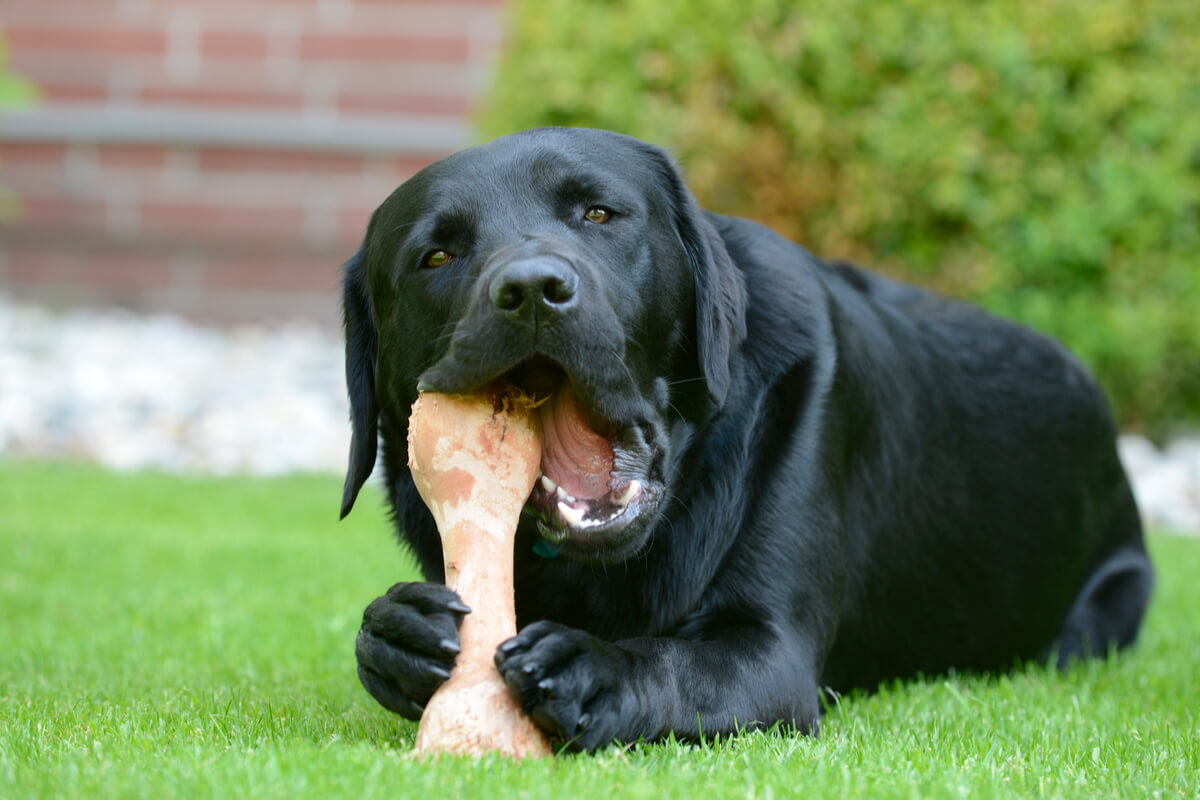7 Toys Not Recommended for Dogs

Playing with your dog can be a source of endless joy, but if there are objects involved, then it’s very important for you to know that you know which toys aren’t recommended for dogs. Many of them can cause really serious accidents in the short and long term. Find out 7 toys not recommended for dogs in this article.
To choose a toy for your dog, you have to take into account several important aspects. If you follow these tips, you can ensure the well-being of your dog when they’re playing.
Why dogs need toys
Play is very important to ensure that dogs are active. There’s even sensory enrichment in the form of scented toys or cognitive challenges.
There are times when your dog needs to play on their own, simply because you’re busy or for them to learn to be independent. It’s important for every dog to have at least a couple of toys to entertain themselves.
Toys are also useful for dogs that get bored easily or suffer from anxiety, as they’ll have a point of reference to release that emotional tension. This is really useful in order to avoid the destruction of household furniture that owners fear so much.

Considerations when choosing a toy for your dog
Every dog has its preferences when it comes to toys. Once you know what tastes they have, you should take into account the following points:
- Toys have to be easily disinfected. Bear in mind that dogs tend to play with their mouths, and so it’s important for their toys to be clean.
- The toy must be made of suitable and non-toxic materials. Each dog has a different level of activity, according to their habits and age. For example, rubber toys may be too harsh for a puppy that doesn’t have its adult teeth, and a soft toy isn’t suitable for dogs that are quite rough.
- Its size must correspond to that of your dog. Toys that are too small are at risk of being ingested, with emergency costs that this will incur.
- Dog entertainment items mustn’t contain small, sharp, or easily detachable parts.
- Some toys are only suitable under supervision, such as those made with braided rope.
- Look on the labels to see if the toys were made specifically for dogs. This will guarantee that all of the above is true.
All cited sources were thoroughly reviewed by our team to ensure their quality, reliability, currency, and validity. The bibliography of this article was considered reliable and of academic or scientific accuracy.
- Barrera, G. (2008, 6 diciembre). Calidad de Vida en Perros Alojados en Refugios: Intervenciones para Mejorar su Bienestar | Barrera | Artículos en PDF disponibles desde 1994 hasta 2013. A partir de 2014 visítenos en www.elsevier.es/sumapsicol. Suma Psicológica. http://publicaciones.konradlorenz.edu.co/index.php/sumapsi/article/view/43
- Dog Toys. (2021). Best Friends Animal Society. https://resources.bestfriends.org/article/dog-toys
